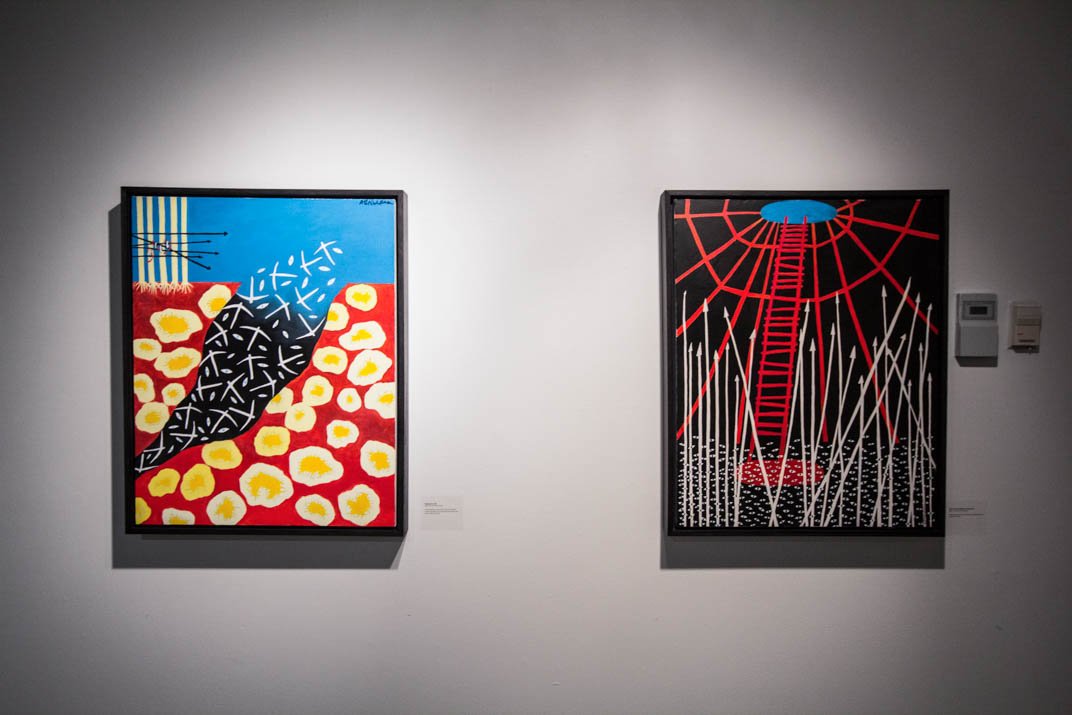
Ann Nicholson // The Chilcotin War: A Colonial Legacy
After moving to Chilcotin, South African artist Ann Nicholson began to learn the history of the Chilcotin War, and gained an understanding of the importance of this war in the lives of the people living there to this day as well as how much the social fabric of the area rests upon the tragic and painful events of 1864 and the colonial years leading up to them.
Nicholson created a body of work, The Chilcotin War: A Colonial Legacy, that traced the conditions leading up to the war during the Gold Rush, the Chilcotin people’s attempts to protect their historical rights to the gold and the land they occupied for centuries, the devastation inflicted on the Chilcotin people by small pox, rape, prostitution, and hunger born of oppression, attempts at negotiating peace, preparations by the Chilcotin people for war, the eventual hanging of five chiefs and the long-term effects of the war.
Growing up in South Africa, Nicholson is familiar with colonialism and its capacity for social destruction. In her youth while at art school in Johannesburg she met people who were connected to the liberation movement and the African National Congress, which was illegal at the time. She became involved in the anti-apartheid struggle and as a result was jailed for 3 years. After moving to Canada in 1974, Nicholson worked as a teacher in Vancouver for years before eventually settling in Chilcotin in 2005. She has a BFA from the Emily Carr University of Art and Design and has exhibited her work across B.C. for the last 20 years.
In Perspective: The Chilcotin War: A Colonial Legacy // Interpretive Essay by Amberley John
Ann Nicholson’s exhibition The Chilcotin War: A Colonial Legacy reinforced the importance of place. We viewers were brought to Chilcotin Country, a plateau and mountain region around Williams Lake, BC. Traditionally inhabited by the Tsilhqot’in Peoples, white colonists and road construction workers laid claim to the land. This aggression led to the Chilcotin War of 1864.
When non-Indigenous artists engage in Indigenous issues in their work, there is always the concern of cultural appropriation. It is the responsibility of the artist to consult with that nation, and be transparent and truthful in their work. Nicholson seems to have approached this subject matter with tact and respect.
Imagery in these paintings asks us to remember the events leading up to the Chilcotin War, and how they contribute to our current unresolved issues. Eyes stare back at you as you witness their truth. Arrows point in one direction in some paintings; in others they create chaos.
Many of the paintings feature a lower tier of Tsilhqot’in associations. This tier becomes increasingly suffocated, growing slimmer as the series progresses. In The Curse (the second to last paintingnext to Chief Ahan’s Grave) we see the chief calling out for his relatives to find him as plans currently progress to build a school on his remains in New Westminster. The Tsilhqot’in Peoples unequivocally have the right to the repatriation of Chief Ahan’s remains.
Winding intersecting paths in Roads to the Gold remind us of the difficult truth about hunger and greed. This hunger for gold and hunger for progress still exist. At the time of the Chilcotin War, the elders said that the 7th generation would have to withstand another onslaught from the white occupiers.
In June, 2014, plans to build a gold and copper mine at Fish Lake and convert many of its surrounding lakes into tailing ponds were brought to a triumphant halt. The Tsilhqot’in Nation was victorious in gaining Aboriginal Title to a 1900 km2 section of territory. This landmark victory halted what would have been the second largest mine in Canada.
Was this the onslaught the elders predicted? “Progress” like the Prosperity Gold and Copper Mines still today threatens the traditional ways of living of the Tsilhqot’in and many other Peoples. Looking back at the six generations before us, how do we embody what we have learned, and how can we use this knowledge to benefit the next seven generations?
she:koli swakwé;ku, kaniyew^na niyúkyats tahnon: ohkwali niwaki’taló:t^ tahnon on^yota’aka niwaku’hutsyot^ ni i. ki-low-na taknakehle.















